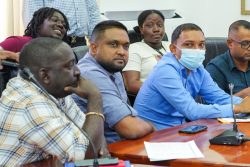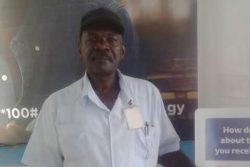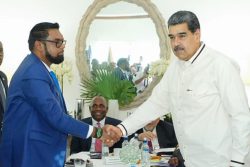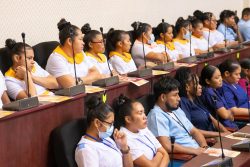Someone at Cricinfo, the authoritative cricket website, must have a wickedly ironic sense of humour. Just as the West Indies cricket team and fans were getting accustomed to the comfortable numbness of losing, until the drawn Second Test on a dead wicket in St Kitts, Cricinfo embarked upon its quest to choose an all-time West Indies XI. The contrast between the legends of the past and the current wearers of the maroon cap, with the honourable exception of Shivnarine Chanderpaul, could not be starker.
Cricinfo has invited a jury including Guyanese Frank Birbalsingh, Imran Khan, Joseph ‘Reds’ Perreira and our own Ian McDonald, in addition to Jimmy Adams, Tony Becca, Hilary Beckles, Fazeer Mohammed, Garth Wattley and Rudi Webster. Strangely, the region’s most respected cricket writer and commentator, Tony Cozier, is missing from the line-up. Nevertheless, it is a fair mix of youth and age, critical for maintaining a sense of perspective across the generations.
Cricinfo has already chosen all-time teams from Australia, England, New Zealand, Pakistan, South Africa and Sri Lanka. But none of these has generated as much discussion and debate as the selection of the West Indies dream team has on the website, to judge by the sheer number of comments logged. It is gratifying that West Indies cricket can arouse such passion, although it is a passion rooted in past glories, representing an almost tragic counterpoint to the disinterest and disillusion surrounding the present West Indies team.
The template employed so far by Cricinfo has been to choose two openers, three middle order batsmen, one all-rounder, one wicketkeeper, three fast bowlers and a spinner. It is open to a little tweaking but does not allow for too much flexibility or creativity. Thus, even at this early stage of the exercise, as the jury has presented the case for the batting line-up, focusing on the openers and the middle order, it promises to be a most challenging task.
West Indian batting represents a proud tradition of individuality, self-expression and entertainment, rich with talent touched by genius, artistry and power. But this is only roughly half of the equation in the forging of much-loved, world-beating teams, and the debate on the bowlers will indubitably be as extensive and highly-charged.
So, how does one go about choosing two openers out of Conrad Hunte (average: 45.06), Roy Fredericks (42.49), Gordon Greenidge (44.72), Desmond Haynes (42.29) and Chris Gayle (40.65)? The online consensus is that the latter does not belong in such exalted company, but perhaps the panel has short-listed him as a bow to contemporary notions of greatness rather than as a reflection of his class, record and technique.
And how to select three middle order batsmen from the likes of George Headley (60.83), Everton Weekes (58.61), Clyde Walcott (56.68), Frank Worrell (49.48), Rohan Kanhai, (47.53), Seymour Nurse (47.60), Clive Lloyd (46.67), Lawrence Rowe (43.55), Alvin Kallicharran (44.43), Vivian Richards (50.23), Richie Richardson (44.39), Brian Lara (52.88) and Shivnarine Chanderpaul (49.04)? Thankfully, Gary Sobers (57.78) will be treated as an all-rounder.
Should we do away with the straitjacket imposed by Cricinfo and simply pick the best six batsmen of all time, based on batting averages – Headley, Sobers, Weekes, Walcott, Lara, Richards – and fit them into a reasonable batting order? It is a fair enough approach but it is not perfect. After all, this would mean that Chanderpaul would come before Kanhai in the rankings, tantamount to sacrilege for anyone who has seen the two bat.
And who would be the skipper? Should Worrell and Lloyd be given extra weight for their man-management skills and their acknowledged contribution to moulding two of the greatest West Indies sides ever, even though Richards never lost a series as captain?
How will the wicketkeeper be chosen? Will it be a straight fight between Jackie Hendricks, Deryck Murray and Jeff Dujon? Or should Clyde Walcott be considered on the strength of his superior batting, allowing the selectors to pick an extra batsman?
How does one choose a bowling attack from the pace of Learie Constantine, Wes Hall, Charlie Griffith, Andy Roberts, Michael Holding, Colin Croft, Joel Garner, Malcolm Marshall, Curtly Ambrose and Courtney Walsh, and from the spin of Sonny Ramadhin, Alf Valentine and Lance Gibbs?
What should be the criteria? Total runs scored and number of centuries or centuries to innings ratio and career batting average? Total wickets taken, bowling average or strike rate? Of course, in cricket more than in most other sports, there are lies, damned lies and statistics, which more often than not tell little about the manner in which runs were made or wickets taken. Yes, statistics can quantify a career, but they cannot truly reflect the indescribable genius and impact of a Constantine or a Sobers, of a Worrell or a Kanhai.
These are questions that have no definitive answers. They can be debated on the internet, in rum shops and beer gardens, at cricket grounds and at home, wherever knowledgeable (and not so knowledgeable) enthusiasts meet. Whatever team is selected from the West Indies pantheon by the panel of experts is bound to provoke further debate, especially when, as suggested by some observers, three outstanding all-time teams could be chosen.
It really is an impossible task and perhaps Tony Becca’s suggestion is as good as any: “It probably will be easier to get a hat, put the names in it, and go from there.” It should not however be considered a thankless one, given the pure joy of conjuring sepia-tinged memories of great performers, the nostalgia for the time when we were kings and the hope still beating in passionate breasts that we can rediscover the talent, hunger and organisational abilities to take us back to the top. That will take some time though…








